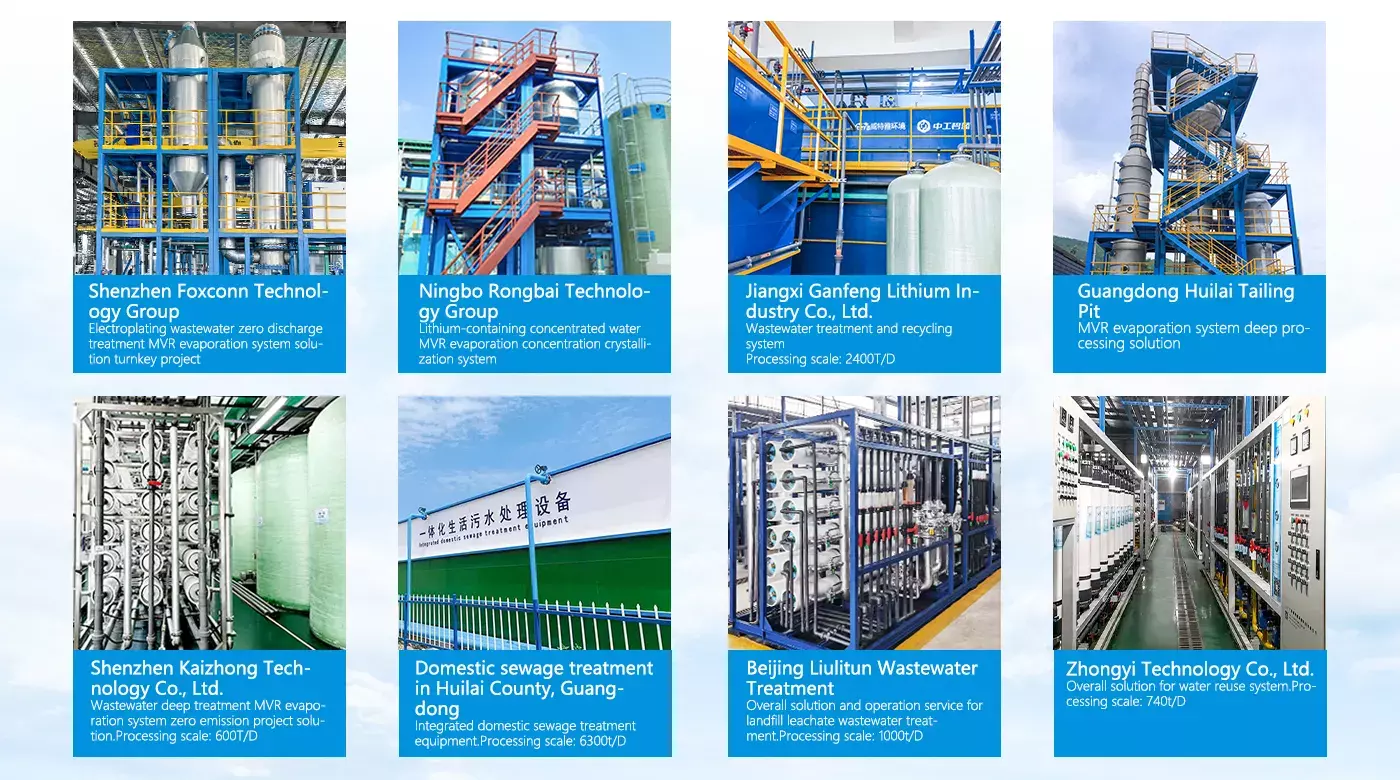WTEYA is a brand you can trust, with over a decade of extensive experience providing efficient and reliable water treatment solutions to numerous well-known companies worldwide. We have successfully implemented projects for publicly listed companies such as Foxconn, Huawei, Ganfeng, and Rongbai, with over a hundred project cases earning strong trust and praise from our clients. We support OEM & ODM customization, offering tailored solutions to meet your unique needs.
Can Fertilizer Wastewater Treatment Methods Truly Meet Future Environmental Requirements?
13 Nov, 2025 3:45pm
With increasingly strict environmental policies, fertilizer industry wastewater treatment has become a key aspect of sustainable development for enterprises. Over the past few decades, traditional wastewater treatment methods have helped businesses meet discharge standards. However, with the growing trends of zero discharge, resource recovery, and automation, the limitations of these methods are becoming more apparent. So, can traditional methods really meet future environmental requirements? This article will explore four key aspects: wastewater characteristics, limitations of traditional methods, industry trends, and WTEYA's forward-looking solutions.
Characteristics of Fertilizer Wastewater and Treatment Challenges 💧
Fertilizer industry wastewater comes from various sources, including production effluents, cooling water, and cleaning water. Its main characteristics are high pollutant concentrations and significant fluctuations in water quality. The wastewater contains large amounts of ammonia nitrogen, phosphates, nitrates, and potassium salts, and may also contain trace heavy metals. It is often rich in organic matter with complex compositions. The instability in water quality makes it difficult for a single treatment method to be consistently effective. On the other hand, increasingly strict environmental regulations for ammonia nitrogen, total nitrogen, and total phosphorus make compliance more challenging for companies. Moreover, this type of wastewater contains valuable recoverable resources, and improper treatment not only leads to environmental pollution but also wastes potential value. 🔍

Limitations of Traditional Methods ⚠️
For a long time, fertilizer companies have primarily relied on neutralization, precipitation, biological treatment, and physical filtration methods. Neutralization and precipitation methods adjust the pH to precipitate some pollutants. While low-cost and simple in terms of equipment, these methods have limited effectiveness for high-concentration wastewater, leading to large volumes of sludge that need further disposal. Biological treatment excels at degrading organic matter, but it is less effective in removing high levels of ammonia nitrogen and heavy metals, and is sensitive to fluctuations in water quality. Physical filtration methods such as sand filtration and membrane separation are mainly used to remove suspended solids, but they are less effective in treating dissolved pollutants, and the membranes often suffer from fouling, leading to high maintenance costs. In summary, while traditional methods can address basic discharge issues, they are increasingly inadequate in the face of stricter regulations and the need for resource recovery. 💡
Future Environmental Requirements and Industry Trends 🔮
In the future, fertilizer wastewater treatment will focus more on zero discharge and resource utilization. The nitrogen, phosphorus, and potassium elements in wastewater can be recovered and reused through efficient processes, reducing raw material costs and supporting the circular economy. At the same time, there is a clear trend toward the centralized treatment of high-concentration wastewater. A combination of evaporation concentration, membrane separation, and advanced oxidation technologies will gradually replace single-process methods, achieving stable compliance and efficient resource recovery. Automation and digital management will also become trends. Real-time online monitoring, automatic regulation, and remote operations will ensure efficient and stable wastewater treatment, areas where traditional methods are lacking. 💻
Furthermore, environmental policies and public oversight pressures are increasing. Enterprises must not only meet environmental standards but also offer transparency and traceability to enhance their green brand value. 🌍
WTEYA's Forward-Looking Solutions 🌟
To address the limitations of traditional methods, WTEYA offers advanced, multi-stage, integrated wastewater treatment solutions. This solution combines physical, chemical, and biological technologies to achieve stable treatment of high-concentration wastewater. The typical process includes: first, reducing the load through evaporation concentration; second, using advanced oxidation to remove difficult-to-degrade substances; and finally, applying biological fine treatment to ensure long-term compliance.
In terms of automation, WTEYA's system comes equipped with real-time monitoring and data analysis platforms, which automatically adjust pH, temperature, flow, and oxidant dosing, ensuring efficient operation even with fluctuating water quality. ⚙️
Resource recovery is a major highlight of WTEYA's solution. Nitrogen, phosphorus, and potassium elements in wastewater can be recovered and reused, either directly for production or converted into environmentally friendly fertilizers, turning wastewater into a valuable resource, reducing raw material costs, and supporting green development strategies.
WTEYA also provides customized solutions, adjusting process combinations based on the size of the enterprise, water quality characteristics, and production processes. These solutions balance environmental compliance, operational costs, and capacity expansion, achieving a win-win situation for both the environment and business economics. 🏭
Conclusion ✅
Traditional fertilizer wastewater treatment methods have played an important role over the past few decades. However, with future stricter discharge standards, resource recovery, and automation trends, their limitations are becoming increasingly evident. Relying solely on traditional processes, companies may face challenges such as unstable compliance, high costs, and resource wastage. WTEYA's comprehensive, intelligent, and efficient wastewater treatment solutions not only ensure long-term compliance but also achieve zero discharge and resource recovery, providing a strong foundation for green development and sustainable business operations in the fertilizer industry. For companies seeking to lead in the future environmental competition, traditional methods may no longer suffice, and adopting forward-looking technology solutions is the wise choice. 🌿
Why Choose WTYEA?
WTYEA Is Recruiting Global Partners!

We welcome your partnership. As a brand with nearly 20 years of experience, WTEYA offers various preferential policies, professional training guidance, and comprehensive technical support you can rely on!
👉 Let WTYEA help you achieve unmatched water quality performance!








